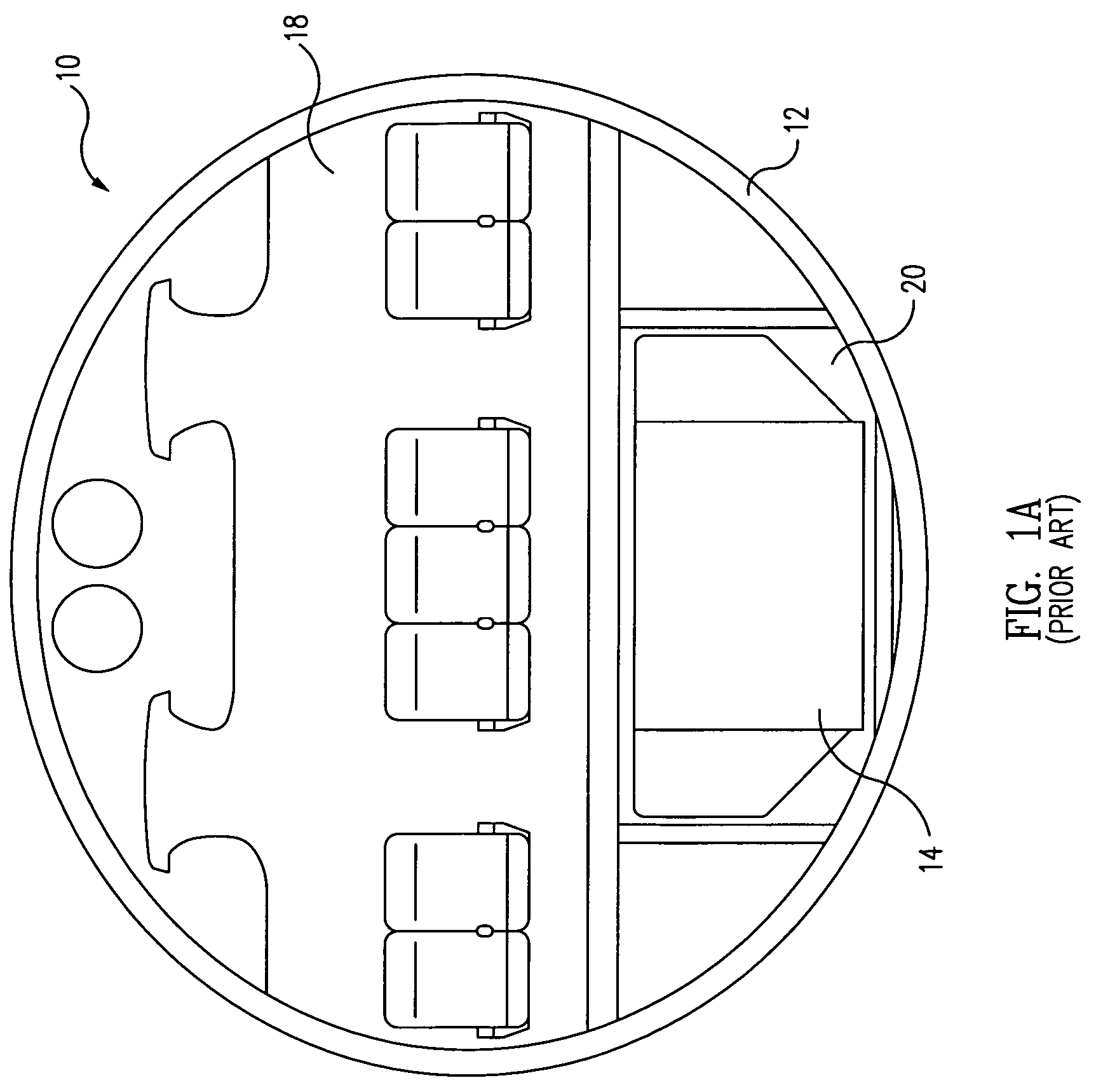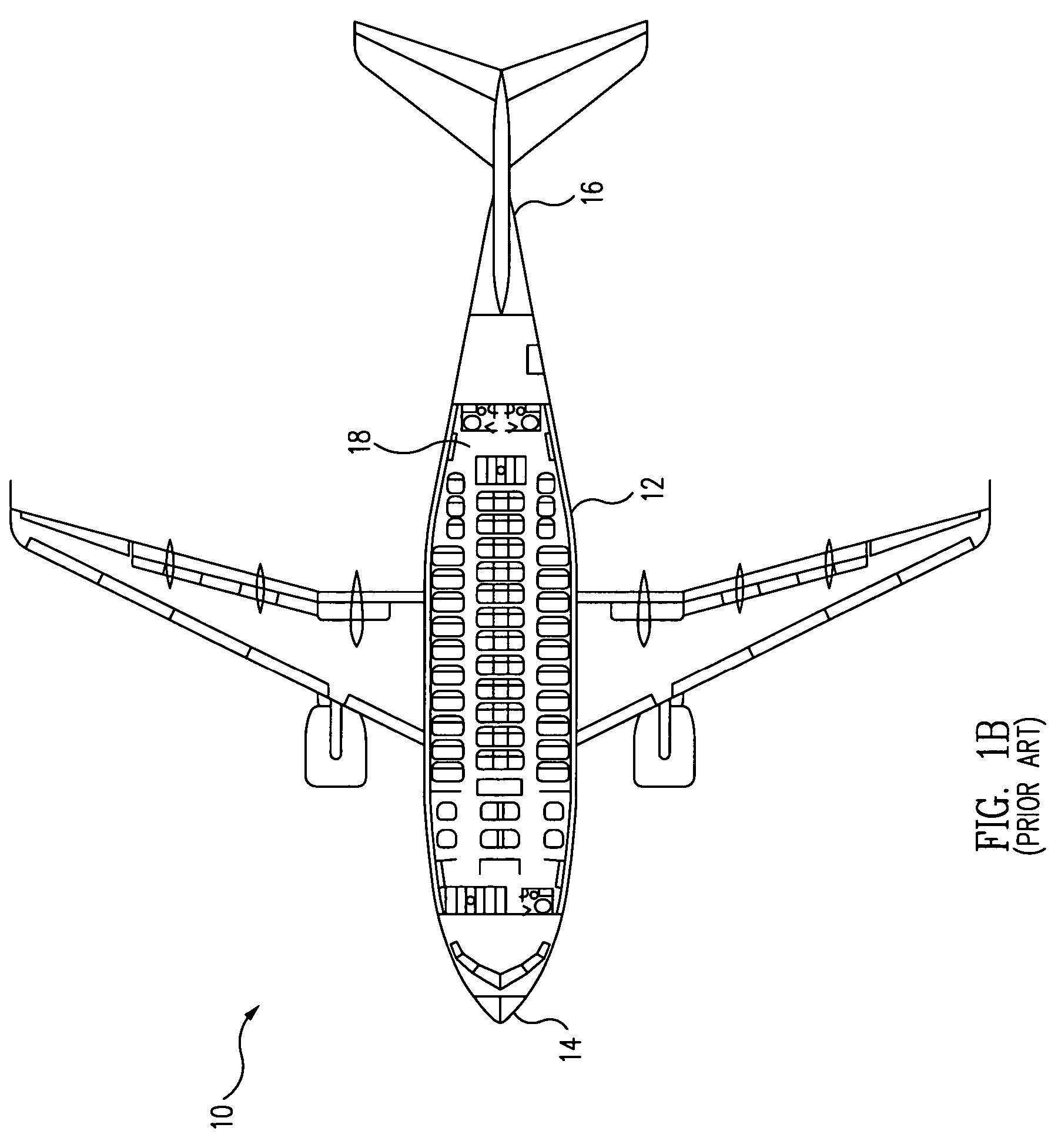Weight optimized pressurizable aircraft fuselage structures having near elliptical cross sections
a technology of aircraft fuselage and cross section, which is applied in the direction of fuselage, sustainable transportation, transportation and packaging, etc., can solve the problems of substantial engineering design challeng
- Summary
- Abstract
- Description
- Claims
- Application Information
AI Technical Summary
Benefits of technology
Problems solved by technology
Method used
Image
Examples
Embodiment Construction
[0024]FIGS. 1A and 1B respectively illustrate cross-sectional front end and plan views of a prior art pressurizable aircraft fuselage 10 having a passenger cabin 18 and a cargo compartment 20. This invention provides a lightweight fuselage shell structure for such an aircraft in which the shell has a near-elliptical cross-section by applying “tailoring,” i.e., optimally selected adjustments, of the structure to more closely match critical design loads as a function of the roll elevation angle φ measured around the centerline axis of the cross-section. An exemplary embodiment of a fuselage shell 20 having a near-elliptical cross-section in accordance with the present invention is illustrated in the front-end cross-sectional view of FIG. 2A. In FIG. 2A, the periphery or outer periphery of the shell is designated 28, and a window belt 31 is disposed adjacent to a passenger cabin 22 having a main cabin floor 32. A cargo compartment 26 is shown with a Unit Load Device or cargo container ...
PUM
 Login to View More
Login to View More Abstract
Description
Claims
Application Information
 Login to View More
Login to View More - R&D
- Intellectual Property
- Life Sciences
- Materials
- Tech Scout
- Unparalleled Data Quality
- Higher Quality Content
- 60% Fewer Hallucinations
Browse by: Latest US Patents, China's latest patents, Technical Efficacy Thesaurus, Application Domain, Technology Topic, Popular Technical Reports.
© 2025 PatSnap. All rights reserved.Legal|Privacy policy|Modern Slavery Act Transparency Statement|Sitemap|About US| Contact US: help@patsnap.com



